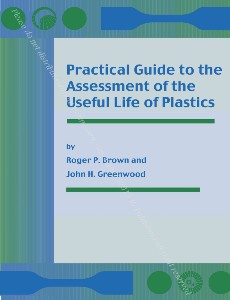After price and delivery time, the most frequently asked question about a product is ‘How long will it last?’ Lifetime expectancy is often many years, the service conditions may be complex, and there is a scarcity of definitive data on durability. The situation is complicated by the fact that there are a vast number of degradation agents, service conditions, properties of importance and different plastics.
There are many inherent difficulties in designing durability tests. In many cases, the time scale involved is such that accelerated test conditions are essential. Whilst large amounts of durability data are generated by accelerated methods, much of it is only useful for quality control purposes and relatively little has been validated as being realistically capable of representing service.
Most assessments of the lifetime of plastics are made by considering some measure of performance, such as impact strength, and specifying some lower limit for the property, which is taken as the end point. Lifetime is not necessarily measured in time. For example, for some products it will be thought of as the number of cycles of use.
< หน้าหลัก / หนังสืออิเล็กทรอนิกส์ / Practical Guide to the Assessment of the Useful Life of Plastics >
Practical Guide to the Assessment of the Useful Life of Plastics

เนื้อหาอย่างย่อ
หมวด: Textbook - โพลีเมอร์ พลาสติกและยาง

.png)
.png)
.png)